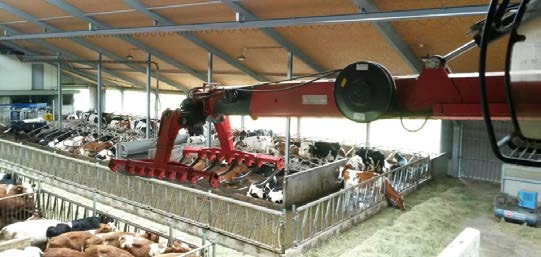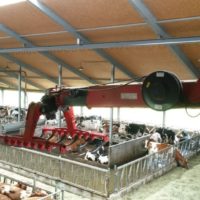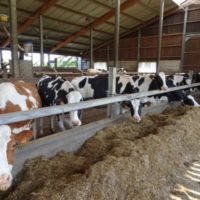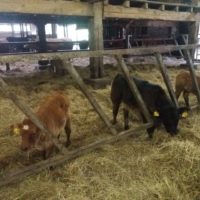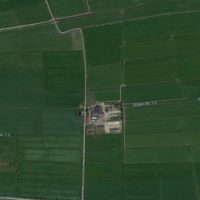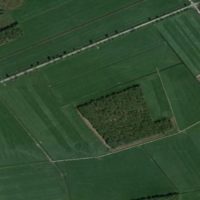Hay feeding system
Description
Background
The farm is located in Beegden. Here lives Twan Linssen together with his wife and two children. Three years ago, the farm had to move 100 meters to create more space for the river. The Linssens used this opportunity to build a new stable and start with a new system. The farm is now an organic dairy farm. The new stable is designed to feed the herd with hay only. The current capacity of the farm buildings is 100 cows. Now, the farm has 65 Holsteins crossed with Fleckvieh cows. Two De Laval milking robots milk the cows. Due to the robots, no foreign staff is needed on the farm. The status of the farm area (in total 124 ha) is shown in the table below.
The dairy cows graze on the grazing platform of 18 hectares near the buildings and the young stock grazes on the 21 hectares of natural land.
The machine park consists of:
- Front mower
- Self-loading silage wagon
- Rake
- Grass harrow
- Cattle transport wagon
- Fertilizer spreader (not in use)
The barn has a total area of 2272 m2. Half of this area is used for housing livestock and the other half for storing hay and wood chips. The barn is naturally ventilated. The water supply is via tap water and water troughs. The grazing platform has been irrigated during the dry summer season of 2018.
Some costs of the farm are given in the table below. Since it is an organic dairy farm, there are no costs for chemicals and artificial fertilizers.
The milk price of the farm was 49.5 cents in 2017. The company could not make a profit in 2017 since the phosphate rights system was introduced in the Netherlands and the number of animals is still low compared to the capacity of the barn. Currently the only product to sell is milk. The entrepreneur is considering creating camping places next to the farm to attract tourists and get an additional income.
The grazing platform is 18 hectares. Each day the cows get a new parcel of about 1 ha. The grass mixture consists of tall fescue, timothy and perennial ryegrass (so called Greenspirit mixture). This mixture has been sown on both the grazing platform and on the more remote parcels. The grass production was only 5-6 tons per ha in the year 2018. This was mainly due to the drought. Normally the yield is between 8 and 9 tons. 30% of the grass yield is for hay production, 60% is grazed and the last 10% is put into bales. Every year the cows graze for about 250 days. They can go outside 24 hours a day.
The herd consists of 65 dairy cows and 45 young cattle. The manure is separated into two components. The solid fraction is used as bedding material in the cubicles. The liquid fraction is used as a fertilizer. The fertilization consists of slurry only. Animal health is good at the farm. There is no acidosis in the cattle, also less than 10% ketosis, (sub clinical) mastitis and milk disease. There are no parasites or infections. In 2017, there were only 3 animals with claw problems. All animals are artificially inseminated. The cattle are fed twice a day with a ration of hay only. The total milk production is 442,000 kg milk per year and 6800 kg milk per cow per year.
Detailed description
Feeding hay is something that hardly occurs in the Netherlands. In countries like Austria, it is more common. The farmer built a new farm three years ago and then used the latest techniques for the hay feeding system. The layout and scale on which the system is applied is new in the Netherlands.
In the barn, there are two large bins created in which the hay is dried. This is done with heat that is collected under the roof and heat released during the combustion of wood chips. The hay is delivered to the cows twice a day with a crane hanging at a rail in the ridge of the barn.
The farmer wanted to distinguish himself from other Dutch dairy farmers. With the feeding of hay only, he can do this. Furthermore, he wanted to improve both animal health and the quality of the product, milk. By feeding only hay in the barn, the cows have a lot of access to roughage and the intake of roughage works positively on the digestive system of a ruminant. The milk that is produced contains amino acids that are easier to absorb by the human body, making the product healthier for people.
Results
By feeding hay in combination with extensive grazing, the health of the cows on the farm has improved. Linssen deliberately opted for a large proportion of fresh grass, because grazing contributes to the health of the livestock and when the cows graze the grass, no energy is needed to make hay.
So far, the concept has no influence on the company’s turnover, because the milk is not yet sold separately. It is the intention of the farmer to start a separate milk flow, e.g. Hay Milk. However, more milk is needed to make the processing of a separate milk flow cost-effective.
Adoption criteria
The farmer now has a group of 6 farmers in the vicinity of the farm that are interested in the concept. These entrepreneurs see the positive results of feeding hay only in the barn and are interested in the idea of setting up a separate milk flow in order to distinguish themselves from other farmers and get a higher milk price.
Future prospects
The biggest challenge for the farmer is the setup of a separate milk flow. A separate milk flow would allow the farmer to translate the new system of hay feeding into a higher turnover for the farm. Another challenge is to ensure enough yield so the cows can really be fed hay only during the whole winter.
Additional information
| Farming system | organic farming |
|---|---|
| Domains of innovation | forage conservation technique, machinery, tools |
| Main types of animal | dairy cattle |
| Country | The Netherlands |
| Product type | Case study |
| Language | English |

